|
DANISH
FERRY SETS NEW ATLANTIC CROSSING RECORD
Scandlines Cat-Link A/S's new fast
ferry the CAT-LINK V is proudly flying the Blue Riband
banner. The Blue Riband and the coveted "Hales
Trophy" are awarded to the vessel with the fastest
average speed over the Atlantic. The award is based on
average speed rather than shortest elapsed time because
the transatlantic routes vary in length.

Cat-Link
V - New York to Bishop Rock 2 days, 20 hrs 9 mins =
Average 41.284 knots
Barely six weeks after the
Buquebus fast ferry, the CATALONIA, set a world speed
record for crossing the Atlantic Ocean, the record was
shattered by the Danish fast ferry CAT-LINK V. The
CAT-LINK V completed the crossing at world record speed
despite a delay of more than two hours to take part in a
search and rescue operation.
CAT-LINK V, a 91.3 meter (300
feet) car and passenger double-hulled catamaran ferry
with four diesel engines generating 34,000 horsepower,
crossed the Atlantic from New York to Bishop Rock
outside Southampton, Britain, in two days, 20 hours and
nine minutes -- the first such voyage in under three
days.
The 500 deadweight ton vessel's
average speed was 41.284 nautical miles per hour
(knots). The previous record of 38.877 knots was held by
Spanish-registered CATALONIA. Both fast ferries were
built by Incat of Australia.
On Saturday night, CAT-LINK V and
other vessels in the area received a call from the
rescue coordination center in Halifax, Canada to search
for a ditched single-engine aircraft, which had sent out
a May-Day signal during a westward cross-Atlantic
flight. A rescue plane spotted debris some 30 nautical
miles behind the CAT-LINK V. The CAT-LINK V was asked to
turned around - towards New York - and proceed
immediately to the area. CAT-LINK V found wreckage and
took it on board, but no survivors.
During its crossing, CAT-LINK V
set a second world record, covering 1,018.2 nautical
miles in 24 hours, beating the Catalonia's record of 1015
nautical miles set 8-9 June 1998. The Catalonia had
broken the record of 868 nautical miles set by the
SS UNITED STATES over the period 6-7 July 1952.
CAT-LINK V, with capacity for 800
passengers and 200 cars, will be put on a regular route
between the Danish ports of Kalundborg and Aarhus -- a
ferry route vying for traffic between eastern and
western Denmark with the new Great Beltfixed link.
History
June 9, 1998- The Buquebus
"fast ferry " CATALONIA completed its
Transatlantic crossing in record time, eclipsing the
mark set in 1990 by the HOVERSPEED GREAT BRITAIN, to win
the coveted Hales Trophy. The CATALONIA
beat the average speed record set by the HOVERSPEED
GREAT BRITAIN by crossing the Atlantic at an average of
38.877 knots, shattering the old record of 36.65 knots
(42.15 mph). CATALONIA
also became the first passenger ship ever to travel more
than 1,000 miles in a 24 hour period, covering a
distance of 1,015 miles between 3 :00 PM EST on June 8th
and 3 :00EST on June 9th.
Australian ferry builder Incat had
achieved a remarkable double. The CATALONIA, in addition
to setting a record for the fastest crossing of the
Atlantic in a passenger vessel, became the first vessel
to sail more than 1000 nautical miles (1852 km) in a 24
hour period, covering 1015 nautical miles (1879.8 km) at
an average of 42.3 knots (78.3 km/h). The previous
record is understood to be 868 nautical miles set by the
SS UNITED STATES over the period 6-7 July 1952.
During the non stop journey from
New York to Tarifa, Spain, CATALONIA traveled an
unofficial 2,972 nautical miles at an average speed of
38.85 knots (71.95 km/h). The previous transatlantic
record of 36.65 knots (67.88 km/h) was established in
1990 by another Incat built vessel, HOVERSPEED GREAT
BRITAIN.
Powering the CATALONIA are four
Cat 3618 diesel engines, the newest and most powerful
marine engines built by Caterpillar Inc. Peoria,
Illinois, in cooperation with Bazan Motores, Cartagena,
Spain. The vessel was built by Incat Australia.
CATALONIA will enter commercial
service between Barcelona and Palma de Mallorca in mid
June 1998. Beneath the success of these records lies a
remarkable story of technical innovation and engineering
prowess. Thanks to an unrivalled global reputation for
innovation, speed, reliability, safety, economy and
passenger comfort, Incat has now built around 40% of the
world's high speed passenger vehicle ferries.
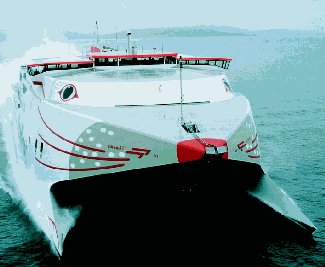
CAT-LINK V
THE
RECORD RUN
The
first few hours with a full load of fuel passed and
after 5 hours, the ship reported a speed of 42.2
knots. Twelve hours out the speed was still 42 knots
with the average speed since the start being 38.6
knots. It was noted at this time that the southerly
winds and seas were building.
By
Saturday morning (day 2) the speed was up to 43 knots
and the average up to 40.28 knots. "Cat-Link
V" then received a relayed MAYDAY message
from Rescue Control Centre, Halifax advising all
shipping to keep a sharp lookout for a ditched single
engine aircraft with two people aboard whose last
reported position, some 40 hours ago, was nearby.
Captain Claus Kristensen reported current position and
notified RCC Halifax that "Cat-Link V" was
proceeding to the last reported position. On board
tension suddenly grew about 10 nautical miles short of
the position when something was sighted in the water -
closer investigation revealed a long line buoy.
"Cat-Link V" proceeded through the area on a
NE course.
Two
hours later a rescue plane circling overhead advised
of debris some 30 nautical miles behind.
"Cat-Link V" was asked to turnaround -
towards New York - and proceed immediately to the
area. After one hour the "Cat-Link V" crew
located the smoke flare dropped by the aircraft and
the debris. Crew member, Soren Kristensen donned an
immersion suit and went over the side to recover a
500mm3 block of foam and a 370mm long
plastic cylinder. Later, about 1 nautical mile from
this position "Cat-Link V" also recovered a
fishing buoy, tragically there are still no clues as
to the fate of the occupants of the plane. All debris
was unrelated to the missing aircraft and having
searched the area for some time "Cat-Link V"
proceeded to the turn around point where she was
relieved of search and rescue duties by RCC Halifax.
Day
3 weather conditions were not favourable - 30 knot
winds and sea on the beam. Engine rpm was reduced to
preserve fuel and the speed, with 770 nm still to
travel, was 40.5 knots.
The
weather finally turned for the better and with 130
miles to go the average speed was up to 39.678 knots.
With the record in sight, the crew calculated that if
they had not diverted to search for the lost aircraft "Cat-Link
V" would have averaged 41.05 knots.
"Cat-Link
V" crossed the
line at Bishops Rock the official UK arrival point,
travelling at a fast 47.6 knots, at 02.17.42
UTC on Monday 20th July. The average speed
achieved was 39.897 knots, just short
of the goal of a 40 knot average for the almost 3000
mile trip but still smashing the Transatlantic Record.
The ship may fulfil their 40 knot ambition if the
Hales Trust (administrators of the Hales Trophy)
approve an adjustment for the time taken for the
search and rescue operation.
HALES TROPHY BACKGROUND
The Blue Riband of the North
Atlantic is the most prestigious steaming record in the
world and 1998 marks the 160th anniversary of the 8.03
knot, 18 days, 14 hours, 22 minute record set by SIRIUS
in April 1838. This crossing, together with the
successful record breaking arrival in New York one day
later by GREAT WESTERN (8.66 knots), created great
public interest in shipping and a quest, by operators,
for transatlantic supremacy. By gentleman's agreement, a
number of shipping magnates decided that the passenger
vessel logging the fastest transatlantic crossing would
be honored with the privilege of flying a blue ribbon
from her mast.
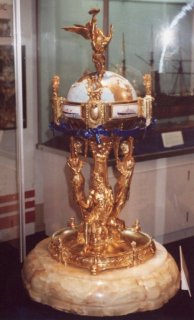
Hales
Cup
Over the next 100 years numerous
attempts were made to gain the honor of being the holder
of the Blue Riband. To encourage innovation in passenger
transport and formalize Blue Riband arrangements,
English Parliamentarian, Harold Hales, commissioned and
donated a four foot high priceless trophy, known as the
Hales Trophy, in 1934. The Trophy is presented to the
"Ship which shall for the time being have crossed
the Atlantic Ocean at the highest average speed".
Great liners such as REX,
NORMANDIE, QUEEN MARY and SS UNITED STATES have all held
the Hales Trophy since its inception. The SS UNITED
STATES won the Blue Riband on its maiden voyage in 1952,
averaging 35.59 knots. That record was broken in 1990 by
the Incat Australia built HOVERSPEED GREAT BRITAIN,
establishing the record at 36.65 knots. In June 1998,
the CATALONIA raised the speed to 38.85 knots and in
July, the CAT-LINK V set a new record speed of 39.897
knots.
CAT-LINK V
Specifications:
CAT-LINK V, a 91.3 meter (300
feet) car and passenger double-hulled catamaran ferry
with four diesel engines generating 34,000 horsepower;
capacity for 800 passengers and 200 cars. The CAT-LINK V
is powered by four Ruston 20 RK270 conventional medium
speed diesel engines. VULKAN's RATO-R
3431 Couplings join the engines to drive transom
mounted Lips waterjets.
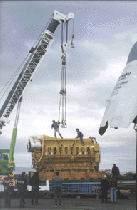
Caterpillar 3618 Diesel Engine
CATALONIA Specifications:
Speed Maximum lightship
condition: 48 knots/89 km/h Deadweight (450 tonne): 43
knots/80 km/h Length overall: 91.30 m Length waterline:
81.34 m Beam overall (excluding fenders): 26.00 m Draft
fully loaded (approx.): 3.70 m (in salt water)
Passengers: 876 people Crew: 24 crew Vehicles 225
cars). Powered by four Cat 3618 diesel engines with
VULKAN RATO-R
3431 Highly Flexible Couplings. Each
engine drives a transom mounted waterjet (Lips LJ145D)
through a Renk ASL60 reduction gearbox.
HOVERSPEED GREAT
BRITAIN Specifications
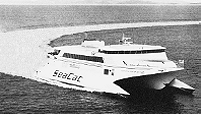
Hoverspeed Great Britain
LOA = 74.3. length
overall: B = 26.0 m breadth Bi = 4.3 m breadth of hulls;
T = 2.5 m draught; Deadweight: 200 DWT
Passengers: 450; Cars: max. 84
Speed:- at 90% MCR - designed 35 knots and 200 DWT -
actual 37 knots-maximum - designed 40 knots- actual 45
knots. Construction: marine grade aluminum
Classification: DNV. + 1 Al Light Craft (CAT) EO
PROPULSION SYSTEM: 4 Ruston Diesel type 16RK 270, each
3650kW at 750 1/min and 4 Riva Calzoni water-jets type
IRC 115 DX.
VULKAN DELIVERY: 2 RATO-S
3311 Highly Flexible Couplings on the outer port and
starboard engines and 2 RATO-S
3324 Highly Flexible Couplings on the inner port and
starboard engines
HOVERSPEED GREAT BRITAIN set the
transatlantic crossing record for the fastest average
speed in 1990 and flew the coveted "Blue Riband"
for eight years. Average Speed - 36.65 knots.
Congratulations to Captain Claus Kristensen and his
crew!
Scandlines hurtigst over Atlanten
Hurtigfærgen Cat-Link V vandt i sommeren 1998 som
det første danske skib Atlanter-havets "Blå Bånd",
og vandt dermed også det meget prestigefyldte trofæ
"Hales Trophy".
Atlanterhavets "Blå Bånd" og Hales Trophy
gives af en særlig komite til det rederi, der er
indehaver af hastigheds-rekorden for sejlads over
Atlanten. Og den rekord blev færgen Cat-Link V
indehaver af, da hun den 20. juli 1998 passerede Bishop´s
Rock ud for Lands End i England, efter en rekordoverfart
på to døgn, 20 timer og 9 minutter – og med en
gennemsnitsfart på over 41 knob.
Den rekord, som Cat-Link V slog var kun en måned
gammel, men trofæet har eksisteret siden 1838, da
hjuldamperen Sirius gennemførte rejsen mellem New York
og South-hampton på 18 døgn, 14 timer og 22 minutter
og vandt som det første skib Atlanter-havets Blå Bånd.
Siden har tyske, britiske, italienske, amerikanske og
franske rederier haft rekorden.
Den amerikanske luksusdamper United States rekord
stod urørt i mange år, fordi trafik-mønstret over
Atlanten ændrede sig fra skibe til fly. Men hurtigfærger
kom ind i billedet. Først med Hoovercraft Great
Britain, og i juni 1998 blev alle hidtidige rekorder slået
af den argentinsk ejede hurtigfærge Catalonia, som
krydsede Atlanterhavet med 38,85 knob.
Denne rekord stod ikke en måned. Den 20. juli 1998
kunne den dansk-australske besætning under ledelse af
kaptajn Claus L. Kristensen indrapportere fire rekorder:
-
Cat-Link V er det første skib, der krydser
Atlanterhavet på under tre døgn
-
Cat-Link V har præsteret den længst udsejlede
distance på 24 timer nogensinde: 1018,2 sømil
-
Cat-Link V er det hurtigste skib nogensinde på
Atlanterhavet med en rekordfart på 41,282 knob
-
Cat-Link V er dermed det første skib, der har
gennembrudt den magiske 40 knobs barriere
Cat-Link V er pr. 1. januar 1999 overgået til
Mols-Linien og hedder nu "Mads Mols".
WEB
LINKS:
www.caterpillar.com
For information about Caterpillar engines.
www.incat.com.au For
further information on Incat For Incat Information: Judy
Benson, Incat Australia 18 Bender Drive, Hobart,
Tasmania 7009, Australia Direct Line: +61 3 62711280
Fax: +61 3 62730932 Email: jbenson@incat.com.au
mobile 0418443299
www.buquebus.com
Please select Ingles (English) version then select Hales
Trophy - Hales Trophy Co-ordination: Sylvia Edwards,
Buquebus, Miami, Florida Email: sylviaedwards@rocketmail.com

www.scandlines.dk
| e-mail: scandlines@scandlines.dk | tlf.: +45
33151515
Scandlines
Denmark
Dampfærgevej 10
2100 Copenhagen Ø
Denmark
E-mail: scandlines@scandlines.dk
Phone: +45 33 15 15 15
Scandlines
Germany
Hochhaus am Fährhafen
D-18119 Rostock-Warnemünde
Germany
E-mail: info@scandlines.de
Phone: +49 381 54 350
Scandlines
Sweden
Knutpunkten 43
S-252 78 Helsingborg
Sweden
E-mail: kundservice@scandlines.se
Phone: +46 42 18 60 00







MARINE
INSURANCE: SAIL,
POWER, TRAWLERS, LINER, YACHTS, RIBs, TENDERS, TANKERS,
CARGO, CONTAINERS
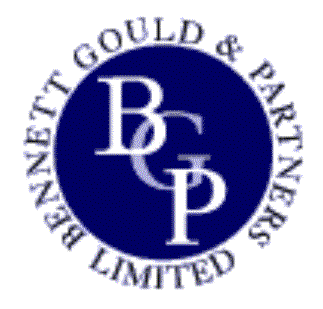
We
all need insurance to protect our investments. If
you buy your marine insurance from this website and
mention us, you will be helping to fund the continuation
of our free information service.
Simply
click on the logo above and choose the type of craft you
wish to insure from the menu page - then follow the
instructions.....
Should
you experience problems with any insurance company on
this site please email: quote@insurance-policy.info
CONTACT:
nelson@solarnavigator.net
07905 147709 (UK)
|